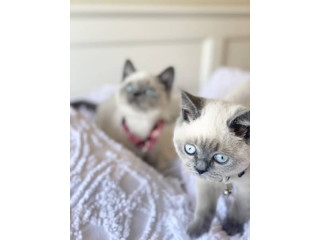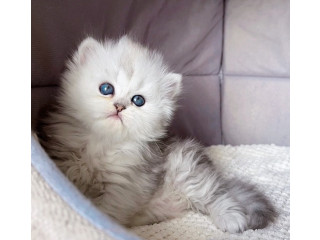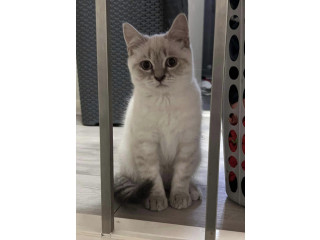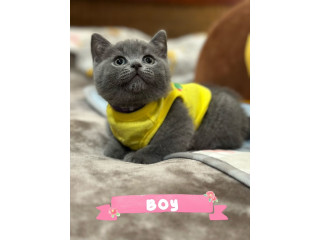Do you have anything to sell or rent?
Sell your products and services online FOR FREE. It is easier than you think!
Start Now!The British Shorthair is an easygoing feline. She enjoys affection but isn’t needy and dislikes being carried. She’ll follow you from room to room, though, out of curiosity. British Shorthairs aren’t lap cats, but they do enjoy snuggling next to their people on the couch.
Temperament
As they age, British Shorthairs become increasingly sedentary, however males are often more rambunctious than the reserved females. They get along well with gentle and respectful children and don’t mind cat-friendly dogs.
Characteristics
British Shorthairs are round all over, with a broad chest and strong legs. Their coats are short, thick and plush. Eye color depends on coat color, but you can expect British Blues to have gold eyes and those with point coloring to have blue eyes. Other eye colors range from golden to copper.
Lifespan
12 to 17 years
Colors
Although their coats come in almost every possible color and pattern, the most popular color is blue (gray). These cats are sometimes referred to as British Blues.
Shedding
Your British Shorthair may experience seasonal shedding in the spring and fall, so brush regularly during those periods to remove loose hair. Outside of those seasons, weekly brushing will suffice.
Health
Although the breed is free from many genetic diseases that plague other breeds, British Shorthairs are susceptible to gingivitis, hypertrophic cardiomyopathy and hemophilia B. Obesity is another concern, as this cat loves to eat and leads a relatively sedentary lifestyle.
Choosing the Best Food for British Shorthair Cats
Due to their inactivity, particularly as they age, weight gain is a concern for British Shorthairs. To keep yours at a healthy weight, choose a cat food formulated for weight management. Follow the feeding guidelines based on your cat’s age and weight or consult with your veterinarian for additional guidance.
To explore other products for your British Shorthair.
Choosing the Best Food for British Shorthair Kittens
Like many other medium to large cat breeds, the British Shorthair takes at least 3 years to fully mature. They only need kitten food specially formulated with all the nutrients essential to their growth and development during their first year of life, however. A kitten food will provide your British kitty with everything she needs to live a long and healthy life.
History
As the oldest breed in England, the British Shorthairs are thought to have descended from domestic cats imported from Egypt, accompanying the Romans when they invaded Great Britain in 43 AD. They grew in popularity during the Victorian era, when stricter breeding standards were implemented. In the early 1900s, the British Shorthair was crossed with the Persian, introducing a longhair gene.
After both World Wars, the breed was nearly extinct. Thanks to cross-breeding, British Shorthairs were revitalized. In 1967, the American Cat Association accepted the breed. It wasn’t accepted by The International Cat Association (TICA) until 1979 and the Cat Fanciers Association (CFA) a year later. The breed is now recognized by all cat associations.
Facts
- Two of the most famous fictional cats are British Shorthairs: Puss in Boots and the Cheshire Cat from Alice in Wonderland.
- British Shorthairs were the only pedigreed cats exhibited at some of the earliest cat shows.




